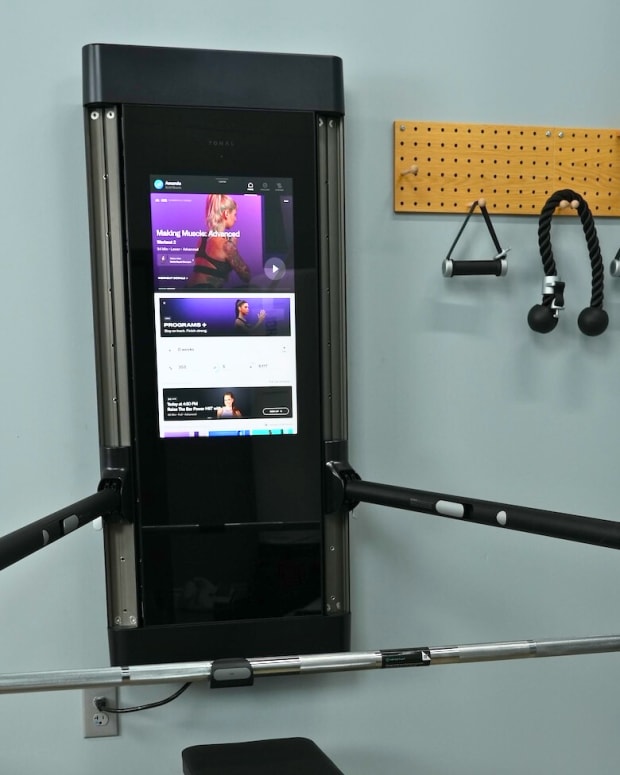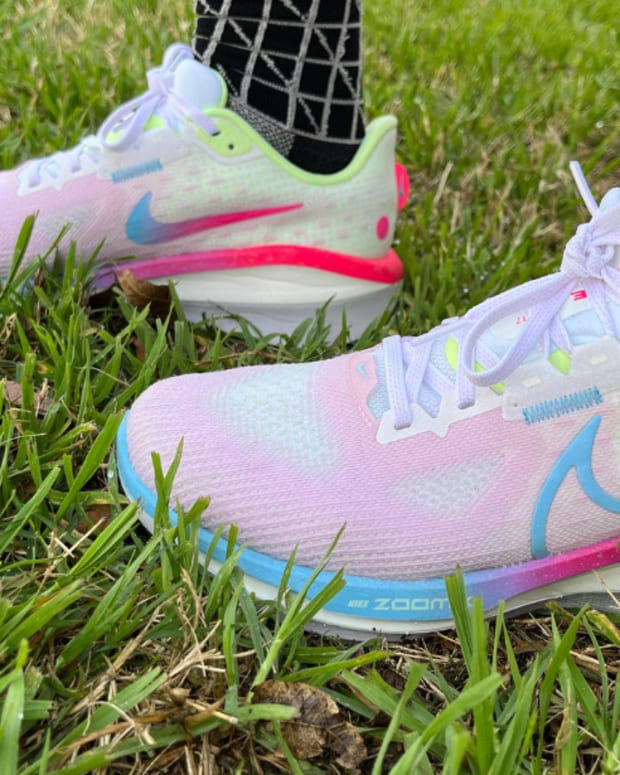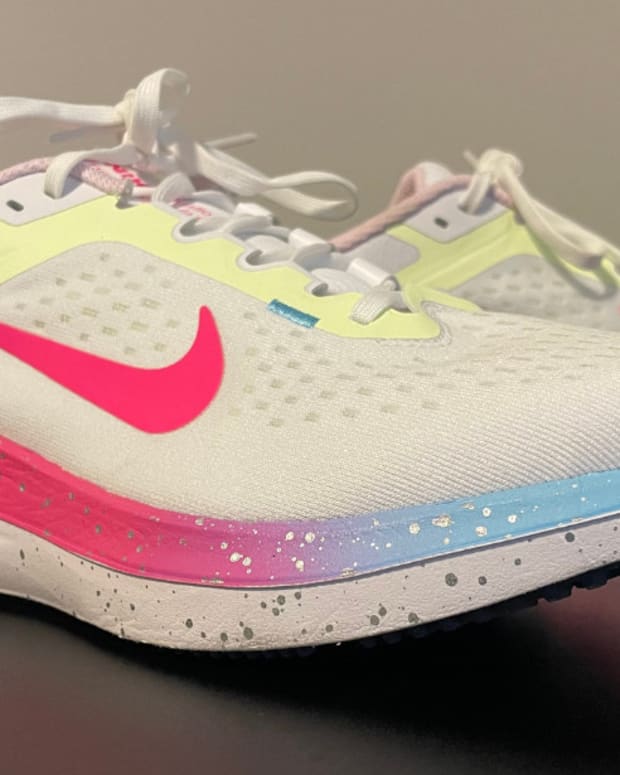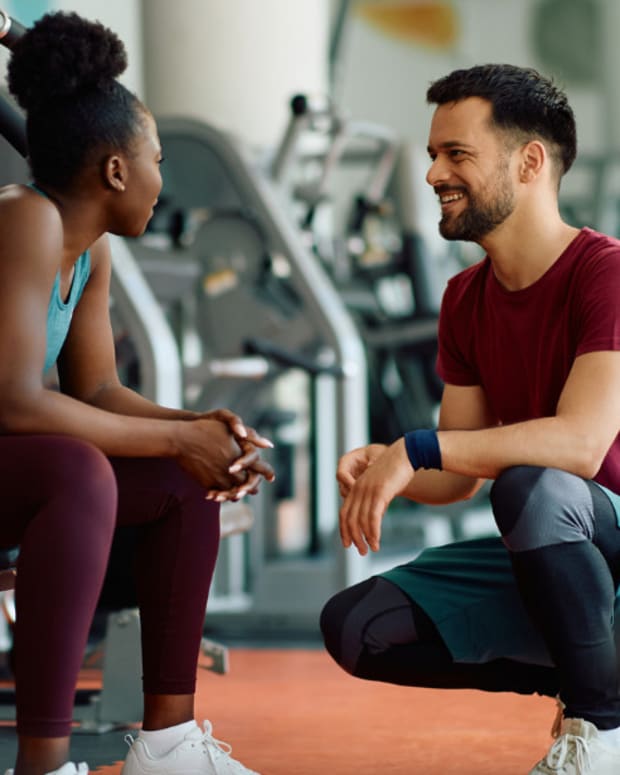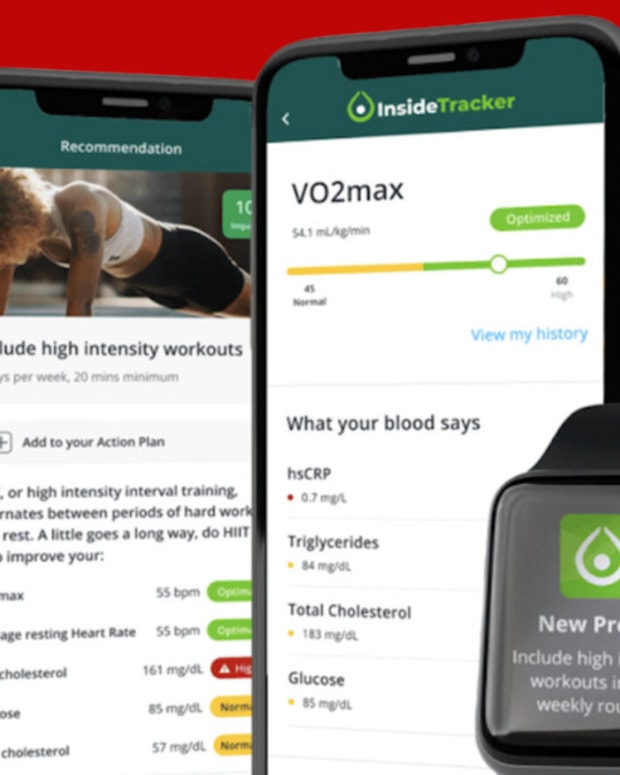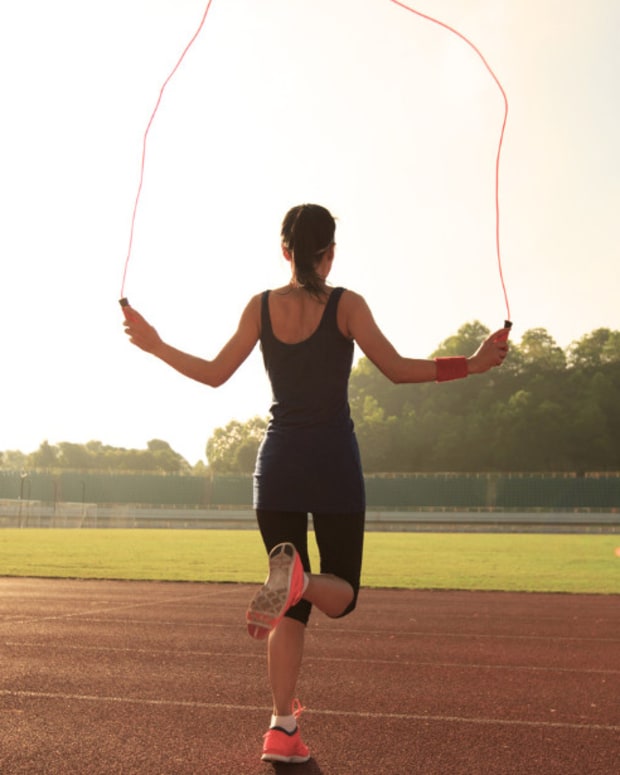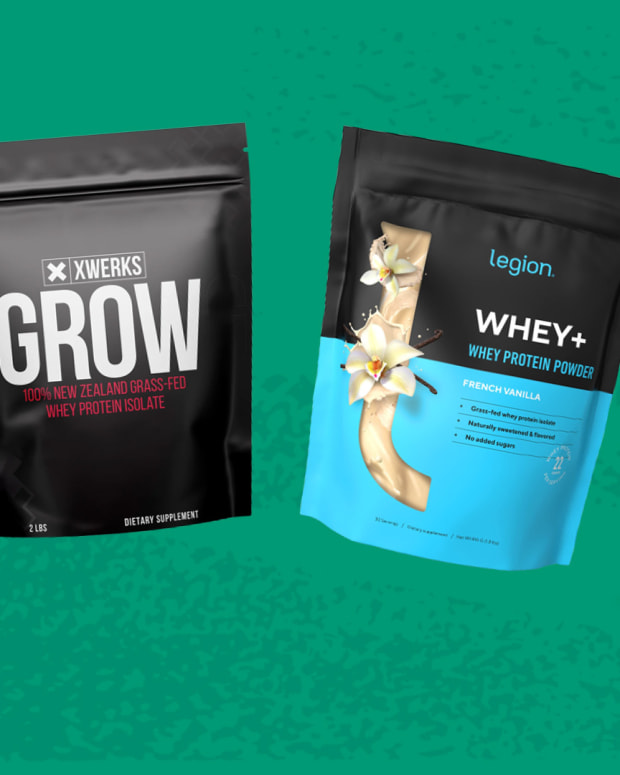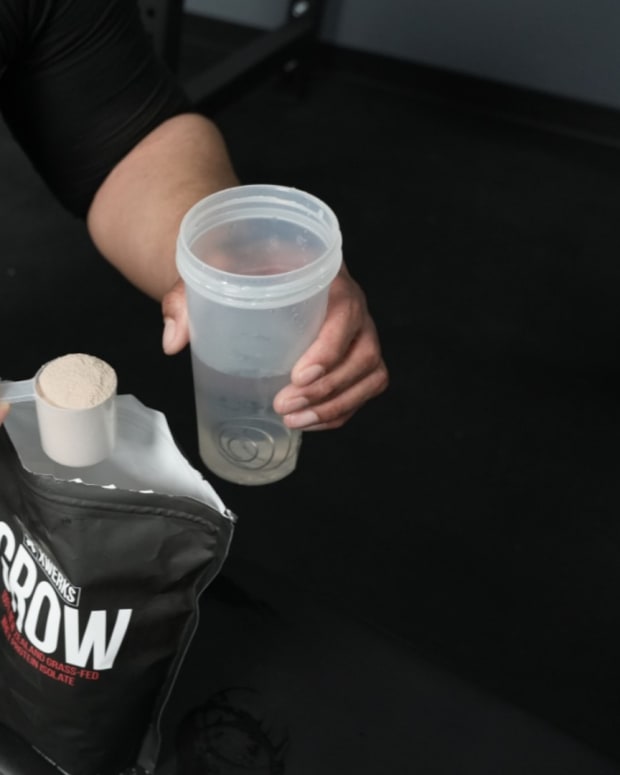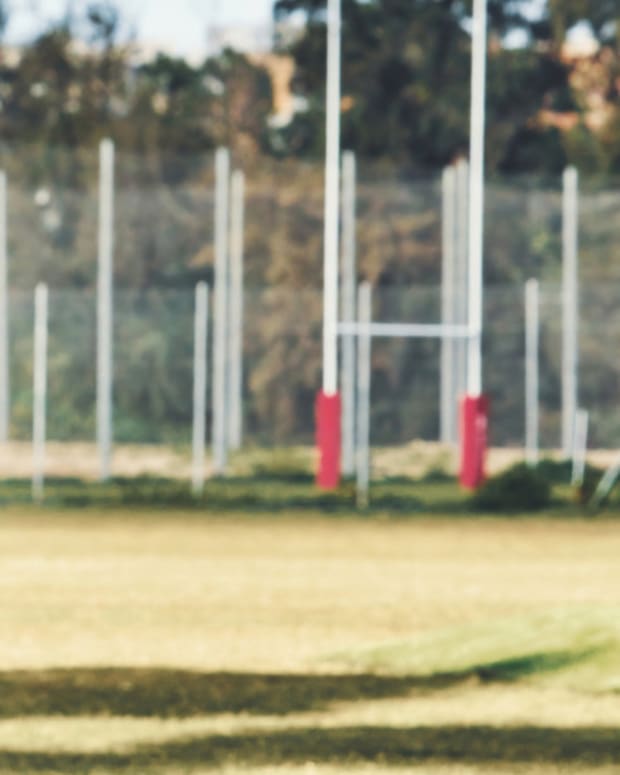The products featured in this article have been independently reviewed. When you buy something through the retail links on this page, we may earn commission at no cost to you, the reader. Sports Illustrated editorial staff are not involved in the creation of this content. Learn more here.
Weighted vests are a quick way to up the intensity and output of any workout. According to one study published in The Journal of Strength and Conditioning Research, wearing a weighted vest that equates to 10% of your body weight can significantly increase calorie burn. Weighted vests have also been shown to decrease body fat, increase lean muscle mass and help improve balance.
Unlike rucksacks which concentrate additional weight on your back, weighted vests evenly distribute extra weight across your entire torso. The best weighted vests are high-quality, adjustable, comfortable and fit seamlessly on your body so they don’t interfere with your movements.
In this guide, we’ll highlight the best weighted vests for all types of workouts, from cardio to strength training to bodyweight exercises like pull-ups or push-ups. We’ll also provide guidance on how to choose the right weighted vest for you and answer the most commonly asked questions about the functional workout gear.
Our Picks for the Best Weighted Vests of 2024:
- Best Weighted Vest for Running: Hyperwear Hyper Vest Elite Weight Vest
- Best Weighted Vest for Walking: Fringe Sport WODMaster Weight Vest
- Best Weighted Vest for Heavy Weights: Titan Fitness 60 LB Weighted Vest
- Best Weighted Vest for CrossFit: Rogue Plate Carrier
- Best Adjustable Weighted Vest: 5.11 Tactec Trainer Weight Vest
- Best Back-Loaded Weighted Vest: GORUCK Ruck Plate Carrier 3.0
- Best Budget Weighted Vest: Condor Sentry Plate Carrier
Best Weighted Vest for Running: Hyperwear Hyper Vest Elite Weight Vest
Key Features:
- Weight Options: 10, 15 and 20 pounds
- Materials: Cordura
- Colors: Black
- Adjustability: Side lacing with a pull cord and adjustable weight
- Weight Storage: Each pocket can hold up to two weight bars
- Price: $230+
- Best For: Runners and those looking for a weighted vest with a slim profile
Pros:
- Slim profile that sits close to the skin
- Horizontal weight design
- Comes in three sizes, each with removable weights
Cons:
- Expensive
- Additional weights sold separately
- Not abrasion-resistant
The Hyper Vest Elite is a sleeker version of the Hyperwear Hyper Vest Pro, one of the most popular weighted vests on the market. Because of its slimmer profile, this weighted vest is ideal for running. While it adds extra weight to your torso, it doesn’t feel bulky or like it’s slowing you down, so you can maintain full range of motion. The horizontal design of the weights allows for complete chest expansion while running, and you can adjust the weight distribution as needed.
The Hyper Vest Elite, which comes in unisex sizing, is available in 10-, 15- and 20-pound options. Each weight bar weighs 2.25 ounces, and each pocket can hold two weights. Five-pound expansion packs are available separately if you want to add extra resistance. The vests are adjustable via side lacing, which also has reflective details to keep you safe on nighttime runs. They’re also made of breathable, sweat-wicking Cordura fabric—a heavy-duty synthetic blend that’s durable and easy to wash.
Best Weighted Vest for Walking: Fringe Sport WODMaster Weight Vest
Key Features:
- Weight Options: 20 pounds
- Materials: Neoprene, nylon straps and Velcro
- Colors: Black
- Adjustability: Adjustable straps and fixed weights
- Weight Storage: Sand is double-stitched into fabric
- Price: $72
- Best For: Lower impact exercises like walking
Pros:
- Minimalist design
- Budget-friendly
- Adjustable and reflective straps
Cons:
- Neoprene isn’t as durable as other fabrics
- Fixed weight
- Limited adjustability
The minimalist design of the Fringe Sport WODMaster Weight Vest makes it a good option for walking. Instead of wrapping around your entire torso, this weighted vest mainly covers your back and traps, with weighted shoulder straps in front that help balance the load. This allows for full chest expansion.
Rather than removable weights, this weighted vest is filled with sand that’s double-stitched into its water-resistant neoprene body. Because of this, the weight isn’t adjustable—each vest weighs 20 pounds—but you can choose from small/medium or large/XL sizing. You can also adjust the straps to ensure a snug fit. There are reflective strips on the straps and on the back of the vest for added safety during early or late walks.
Best Weighted Vest for Heavy Weights: Titan Fitness 60 LB Weighted Vest
Key Features:
- Weight Options: 60 pounds
- Materials: Not listed
- Colors: Black
- Adjustability: Adjustable belt and weights
- Weight Storage: Each pocket holds a 2.5-pound weight bar
- Price: $124.99
- Best For: Advanced users
Pros:
- Weights are removable
- Adjustable belt
- Padded shoulder straps
Cons:
- No reflective bands
- Only comes in one size
- Limited padding
Many weighted vests max out at 20 to 25 pounds (without purchasing additional weights). This 60-pound weighted vest from Titan Fitness starts with a significantly heavier load, making it a good fit for advanced users looking for serious weight training. Each pocket holds a 2.5-pound steel bar, so you can reduce the overall weight in small increments on days when you want a less intense workout.
The vest only comes in one size, but there’s an adjustable velcro belt that allows a secure fit for most body types. It has a pullover design and the straps are padded, so even with the heavy load, it won’t uncomfortably dig into your shoulders. There are no reflective bands, though, so if you like to workout outside, this vest is best for daytime use.
Best Weighted Vest for CrossFit: Rogue Plate Carrier
Key Features:
- Weight Options: 10, 11.5, 15, 20 and 40 pounds
- Materials: Cordura fabric and Velcro straps
- Colors: Black, brown, gray and green
- Adjustability: Available in three sizes; adjustable velcro strap and interchangeable weights
- Weight Storage: Two plate pockets (one in front and one in back)
- Price: $200+
- Best For: Functional training and those wanting to own equipment for CrossFit
Pros:
- Slim profile
- Comes in three sizes
- Extremely durable
Cons:
- Weights and vest sold separately
- Solid weight plates limit adjustability
- Expensive
While weighted vests have long been used for military training, CrossFit is often credited for making them a more mainstream piece of fitness equipment. Because CrossFit WODs (workouts of the day) rely heavily on functional training, you need a weighted vest that doesn’t interfere with your natural range of movement. With its slim, lightweight design, the Rogue Plate Carrier fits the bill.
It has a straightforward construction with two weight pockets—one in the front and one in the back—that cover the majority of your torso. Instead of individual weight bars, it relies on two weight plates. This limits the weight adjustability, but ensures that you don’t have to worry about dozens of individual weight bars. It’s heavily padded on the body, and you can opt for an additional shoulder pad set for an extra $20. It also has minimized seams to prevent chafing. There are three sizes, each of which is further adjustable thanks to a Velcro waist strap. When budgeting, keep in mind that the plate carrier and the weight plates are sold separately.
Best Adjustable Weighted Vest: 5.11 Tactec Trainer Weight Vest
Key Features:
- Weight Options: 10, 11.5, 15, 20 and 40 pounds
- Materials: Polyester
- Colors: Black, green, tungsten, brown and black camouflage
- Adjustability: Adjustable waist and shoulder straps; interchangeable weights
- Weight Storage: Two plate pockets (one in front and one in back)
- Price: $190+
- Best For: Those who like to switch up their workouts and those sharing a weighted vest with someone who has a different fitness level
Pros:
- Fully adjustable design
- Compatible with various weight plates
- Has pockets and storage compartments
Cons:
- Weights and vest sold separately
- Only available in one size
- Weight plates limit weight adjustments
Most weighted vests are adjustable to some degree, but the 5.11 Tactec Trainer Weight Vest puts customization at the forefront. It comes in only one size, but the wraparound design has an adjustable cummerbund around the waist and adjustable shoulder straps to help you find your ideal positioning. There are also internal straps in the weight pockets to keep the plates securely in place during your workout and zippered storage pockets to hold your valuables.
Like the Rogue Plate Carrier, the 5.11 Tactec vest uses full weight plates, one in the front and one in the back. However, it’s compatible with a wider range of options, including 5.11’s own branded plates, the Tactec Weight Plate Sandbag, and Rogue’s standard, USA Cast and Echo weight plates. This gives you more options when it comes to total weight capacity for the vest. The vest and weight plates are sold separately.
Best Back-Loaded Weighted Vest: GORUCK Ruck Plate Carrier 3.0
Key Features:
- Weight Options: 20 or 30 pounds
- Materials: Cordura and EVA Foam Padding
- Colors: Black or brown
- Adjustability: Adjustable shoulder and sternum straps
- Weight Storage: Single plate pocket in back
- Price: $95
- Best For: Walking, hiking and rucking-style workouts
Pros:
- Adjustable shoulder and sternum straps
- Padded lumbar region for extra support
- Comes in three sizes
Cons:
- Weight plates sold separately
- Only compatible with 20- and 30-pound plates
- No hip strap
Standard weighted vests distribute weight evenly across your torso, but rucksacks like the GORUCK Ruck Plate Carrier 3.0 concentrate the additional weight on your back. Instead of weight pockets around the entire body, this vest has a more backpack-like design. There’s a single weight pocket on the back, with padded shoulder straps and a sternum strap that secures the sack in place. There’s also padding at the top of the plate pocket and in the lumbar region for a comfortable fit.
There are three sizes—small, medium and large—each of which is designed to hold either a 20- or 30-pound GORUCK Ruck Plate (sold separately). The plate pocket itself is padded and has a hook-and-loop design that keeps the weight securely in place and higher up on the back, even when you’re upside down.
Best Budget Weighted Vest: Condor Sentry Plate Carrier
Key Features:
- Weight Options: 10, 11.5, 15, 20 and 40 pounds
- Materials: Not listed
- Colors: Black, tan, green and black camouflage
- Adjustability: Adjustable shoulder and side straps
- Weight Storage: Two plate pockets (one in front and one in back)
- Price: $127
- Best For: Those who want to start loaded training with minimal upfront cost
Pros:
- Adjustable waist strap
- Padded shoulder straps
- Budget-friendly
Cons:
- Vest and weights sold separately
- Only available in one size
- Not as durable as other options
If you like the design of the Rogue Plate Carrier, but find the cost prohibitive, the Condor Sentry Plate Carrier is a more budget-friendly option. It has a similar construction, with two plate pockets—one in front and one in back—plus adjustable shoulder and side straps that provide a snug fit. The body itself has a padded, mesh interior for comfort and breathability, and the shoulders come with mesh pads.
This vest is only available in one size, but the adjustable strap works for waists from 30 to 46 inches. It’s compatible with the Rogue weight plates, so you have the same five weight options from 10 to 40 pounds. The weight plates are sold separately.
Benefits of Wearing a Weighted Vest
Weighted vests are often used for military training, but they have a lot of benefits when it comes to general fitness, too.
Studies show that wearing a weighted vest can increase calorie burn, decrease body fat, increase lean muscle mass and help improve balance. One study that was published in Sports Biomechanics also showed that wearing a weighted vest during sprint-running training can improve velocity and time.
Weighted vests have also been shown to improve bone mineral density and decrease the risk of fractures in older adults with osteopenia, a condition characterized by weaker-than-normal bones.
How to Use a Weighted Vest
Weighted vests are one of the simplest ways to take your workout intensity to the next level, whether you’re doing cardio or calisthenics. To use one, all you have to do is strap it to your upper body and continue with your workout as usual.
When wearing a weighted vest, make sure it has a snug fit. It should be tight enough that it doesn’t shift or move around, but you should be able to retain full range of motion and full expansion of your chest when breathing.
Depending on the type of exercise you’re doing, you may need to remove or add weights for the biggest benefit. An adjustable weight vest makes it easier to use different weights for various types of exercise.
If you don’t have a lot of experience with weighted vests, you may want to start on the lighter end and work your way up to heavier weights. As you get used to the vests, you can tack on added weight.
How to Choose the Best Weighted Vest for You
When choosing a weighted vest, you’ll want to consider how you plan to use it, the weight range, the size/fit and how durable it is. Of course, your budget should always factor in.
Use
You can use most weighted vests for a variety of workouts, but some are better suited for certain movements or types of wear than others. For example, a bulky vest will be okay if you use it mostly for walking on a treadmill. However, if you’re doing box jumps or high-intensity workouts, or wearing your weighted vest when running, you’ll need a slimmer design that won’t impede your natural movement. If you plan to use your weighted vests for different types of workouts, you’ll likely want one that allows you to adjust the overall weight load as needed.
You’ll also want to consider whether you plan to use your weighted vest when exercising outside. If so, you’ll want to purchase one with reflective bands or plan to purchase a separate safety vest to wear over it.
Weight range
As a general rule, a weighted vest should be about 10 percent of your body weight. However, when starting out with this type of functional training, you should go a little lower. As you get used to the added resistance, you may be able to up this number a bit.
Keep the 10 percent rule in mind when choosing your weighted vest, and make sure you pick one that can accommodate the right weight range for you. For example, if you weigh 200 pounds, you’ll want a vest that falls between 10 and 30 pounds.
Size/fit
It’s important that your vest fits properly. It should be snug and secure, but not so tight that you feel like you can’t take a full, deep breath. Some vests are one-size-fits-all with adjustable straps or belts that allow you to tighten or loosen it as needed. Other vests come in different sizes, like small to XL. If you’re purchasing a vest that has different sizes, check the size chart and measure your body as needed to ensure you’re choosing the right one.
You’ll also want to consider the fit of the vest. Some completely cover your torso, while others have shoulder straps in the front with most of the coverage in the back. One type of fit isn’t necessarily better than the other, but it’s important to consider your personal preference here.
Durability
Weighted vests can take a beating, especially if you’re using them daily and constantly changing out the weight plates. Most manufacturers understand this and, as such, make them with highly durable material like Cordura. However, some are made with neoprene material, which can break down faster. When choosing a weighted vest, consider how often and how intensely you’ll be using it, and choose your materials accordingly.
Cost
The cost of a weighted vest can vary widely depending on the type of materials used. When choosing one for you, determine your budget, and make your choice accordingly. Keep in mind that some vests don’t include weights. Others might require you to purchase additional expansion packs if you want to up the weight limit. These added costs should be factored into your overall budget.
Weighted Vest FAQs
How heavy should my weighted vest be?
As a general rule, your weighted vest should be around 10 percent of your body weight. If you’re 150 pounds, that means a 15-pound vest is best for you. If you’re 25 pounds, your weighted vest should be 25 pounds. It’s best to work up to this number if you’re new to loaded workouts.
What muscles do weighted vests work?
Weighted vests don’t directly work your muscles, but they add resistance to whichever type of workout you’re doing. Weighted vests have also been shown to increase calorie burn and help strengthen your lungs, improving VO2 max, or the amount of oxygen you take in during exercise.
Can a weighted vest hurt your back?
Weighted vests are safe for most healthy people when used as directed. However, if not worn properly, or if you wear too much weight at once, there’s a possibility that a weighted vest can hurt your back. If you have existing back or neck problems, wearing a weighted vest can also exacerbate the condition.
Before using a weighted vest, talk to your doctor about whether it’s right for you. If you’re new to working out with a weighted vest, starting with a low amount of weight and slowly working your way up as your body adjusts can help reduce your risk of injury. You could also start with lighter weight equipment, like ankle weights.
What's the difference between a compression vest and a weighted vest?
A weighted vest has steel plates or sand added to it to increase weight. A compression vest provides pressure via a tight-fitting material or inflatable air pockets. Both weighted vests and compression vests are often used to simulate deep pressure therapy (DPT), or the sensation someone feels when being hugged or swaddled. However, weighted vests are also used as a form of added resistance during exercise, while compression vests are not.
Final Thoughts
Weighted vests are a simple way to add resistance to any type of exercise, from cardio workouts to weightlifting. There are many different styles, and the best one for you depends on how you plan to use it. The Hyperwear Hyper Vest Elite Weight Vest is a good choice for running due to its slim design and horizontal weight bars, while the Rogue Plate Carrier is a favorite for CrossFit WODs.
Prices are accurate and items in stock as of publish time.








